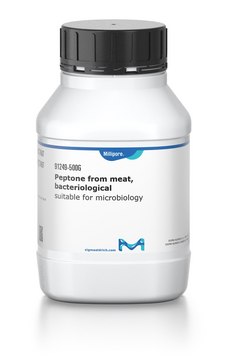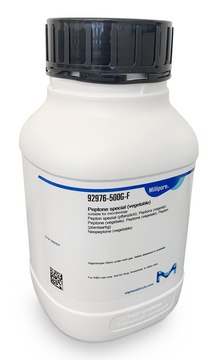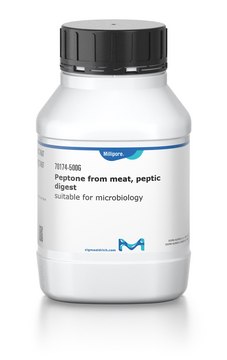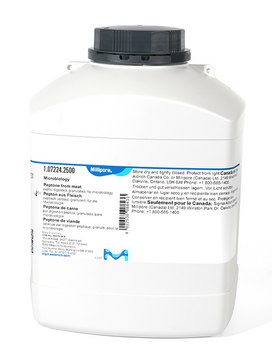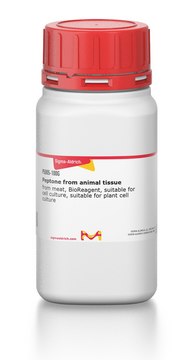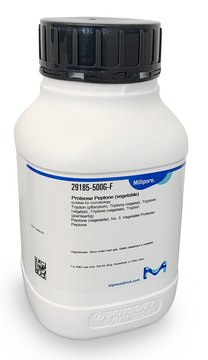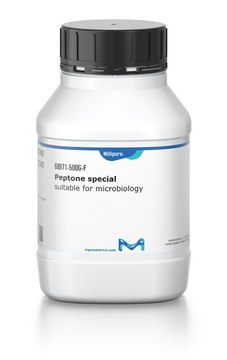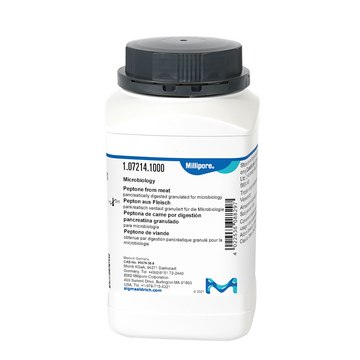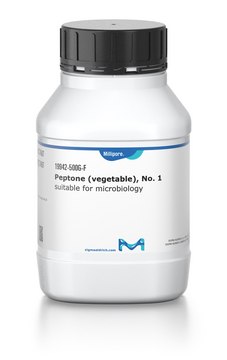70175
Peptone from meat, enzymatic digest
suitable for microbiology
Recommended Products
biological source
bovine skeletal muscle
form
powder
technique(s)
microbiological culture: suitable
impurities
≥10% total nitrogen (N)
≥3% amino N
ign. residue
≤12%
loss
≤6% loss on drying
pH
7.0±0.5 (25 °C, 2% in H2O)
solubility
H2O: 2%, clear, slightly yellow
application(s)
food and beverages
microbiology
suitability
Clostridium spp.
Corynebacterium spp.
Salmonella spp.
Staphylococcus spp.
Looking for similar products? Visit Product Comparison Guide
General description
Application
- to culture Candida albicans
- to study its effects on canonical and non-canonical receptors of glucagon-like peptide 1 (GLP1) in human colon tissue in different ex vivo models
- as a component of the nutrient broth (NB) to study its efficacy against pathogen resistance in grapevine plants
WGK
WGK 3
Flash Point(F)
Not applicable
Flash Point(C)
Not applicable
Personal Protective Equipment
Regulatory Information
Certificates of Analysis (COA)
Search for Certificates of Analysis (COA) by entering the products Lot/Batch Number. Lot and Batch Numbers can be found on a product’s label following the words ‘Lot’ or ‘Batch’.
Already Own This Product?
Find documentation for the products that you have recently purchased in the Document Library.
Our team of scientists has experience in all areas of research including Life Science, Material Science, Chemical Synthesis, Chromatography, Analytical and many others.
Contact Technical Service